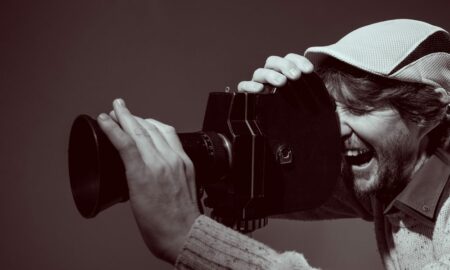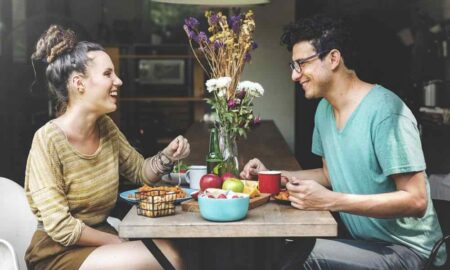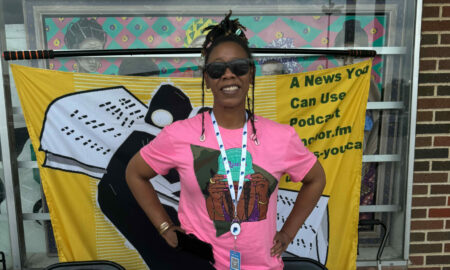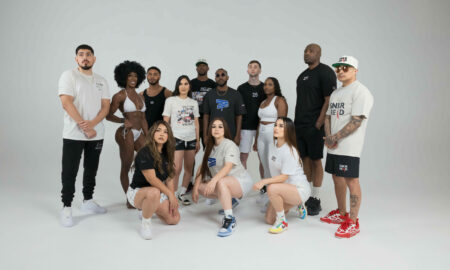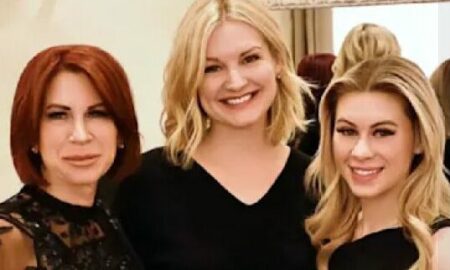

Today we’d like to introduce you to Mary A. Johnson.
Thanks for sharing your story with us Mary. So, let’s start at the beginning and we can move on from there.
I graduated with my BA from Gordon College in 2008, and my MFA from the State University of New York at Buffalo in 2013. My undergraduate background was heavy on the traditional: stone carving, atelier figure drawing, and the like. At the same time, my graduate studies focused on Visual Studies and the three years I spent there exposed me to ways of making and thinking that brought my work into the broader contemporary conversation. I think the two very different educational experiences I had the opportunity to be a part of is reflected in the work I make as an artist today: a tenuous and sinewy bridge between the digital and synthetic and craft and the naturally-derived.
It while was working on my MFA that I began to experiment with photographing still lives and then utilizing not only the collaged images with drawing in two dimensional pieces but the organic subjects themselves as material on the paper: pomegranate, grape, spinach.
Soon after graduating, I decided to move to Shanghai, China- partly out of pragmatics- full time art educational employment- but also out of a desire for a shake-up. I decided to move and left within the month- and I stayed. I have recently returned from China, after living and teaching in Shanghai that first year, and Beijing for the next four, recently teaching at the Central Academy of Fine Art. I repatriated to Denton, Texas where I currently teach at the University of North Texas.
While in China, I began to get a stronger handle on where my work was headed and how to push the edges of the manufactured-natural divide. China has been, and is currently, the manufacturing hub of the world, with wholesale materials such as large sheets of Mylar and plastic readily available cheaply to the individual, and moving at a very fast pace. I was able to experiment quickly, and scrap, or continue multiple projects, trying out multiple methods of printing, photographing, and utilizing a whole new group of natural materials that had unexpected results: red dragon fruit, black rice, and baijiu, a fermented sorghum liquor that mordents natural dyes such as logwood in interesting ways. In one installation, I might scan small drawings onto large sheets of vinyl, utilizing swatches of faux orange fur and hundreds of neon plastic cups, while dyeing cotton paper with purple cabbage mordanted with aluminum and rice paper with green matcha powder. My most recent solo exhibition in China was at Square Gallery in Shanghai, where I encapsulated a tiny 3 x 4 meter room in an early 19th century Shikumen lilong or row house, in a digital collage of dark, earthy still life images on vinyl, silhouettes of rice paper dyed to a pitch black in indigo and black rice, and thick black faux fur coating the floor, where viewers were required to enter shoelessly. A synthetic olfactory machine pumped saccharine florals into the small, barely lit space.
We’re always bombarded by how great it is to pursue your passion, etc – but we’ve spoken with enough people to know that it’s not always easy. Overall, would you say things have been easy for you?
What doesn’t kill you makes you stronger- or at least wiser. The first year adjusting to a very different culture than my own, with very little language skills, was fairly difficult. The mainland Chinese art scene, also, works very differently than the American one I was most accustomed to. Getting connected and showing was a difficult start. However, once the ball started rolling, it sped up quickly, and I am so grateful for the many opportunities I had while there, and how much dynamic it breathed into my studio practice. While working in such a quickly developing place, you can only expect the unexpected, and so I was also able to gain a roll-with-the-punches, anything-goes approach to making, showing and teaching art.
Repatriating certainly isn’t without its challenges- your native culture often ends up feeling foreign after adjusting to something different for so long. Currently, my partner and I are navigating the byzantine crawl spaces of the American immigration system. Between the two systems we’ve worked through in the past several years, I’d say we could write our own Kafka novel. However, I’m grateful for my little outdoor space here and long walks (very socially distant) along the back roads in Denton, enjoying the many Texas wildflowers, a far cry from our 11th floor apartment in Beijing.
Please tell us about your art.
I create work using organic materials and digital images reminiscent of petri dishes, forgotten refrigerators, and Dutch still lives. The work takes the form of thickly-layered paper-based constructions, flat and not flat, and stretches itself to investigate places of tension. Organic materials seamlessly run into printed images and distinct polarities become indistinct my work.
I primarily use collaged elements that are created as opposed to found. The digital images used in my work are taken from still lives I build in the studio and allow to sit for weeks. I use photography based on its presumption to capture an image or experience reliably, but my work emphasizes the unstable and unreliable. Collaged images, in conjunction with natural dyes, create a space in which it is difficult to determine which is which. The work locates itself in a stretched spot in between what attracts and repulses us, what is organic and synthetic, and what we see and what we think we see. In this place, you make choices: do you question your perception or your environment?
I have shown my work globally including the New York Hall of Science, the Nekrasov Library in Moscow, and multiple art centers and museums in China. My work has been in group exhibitions juried by Jerry Saltz and Garth Johnson. Additionally, my work has been included in multiple international publications, including Rebeka Elizegi’s book “Collage by Women: 50 Essential Contemporary Artists” published by PromoPress in Madrid and sold in bookstores globally such as the Metropolitan Museum of Art in New York and the Museo Reina Sofia in Madrid.
So, what’s next? Any big plans?
I’m looking forward to exhibiting here in DFW, as well as exploring how the pH of US and Texan soil effects natural dyes. Longer term, I’d also like to start traveling to international locations in the western hemisphere this time!
What do you like best about our city? What do you like least about our city?
Thus far, I’d have to say I like the food the best! I have loved exploring multiple local restaurants in the DFW area, and I don’t think the list of what I hope to try will ever end. The diversity of the available foods is exciting. Of course I’ve tried my share of Tex-Mex, but I’ve also had great Thai, Vietnamese, and Salvadoran dishes. I would have to say that UNT’s cafeteria is also pretty good! Additionally, I have found people I encounter friendly and personable, and that has been a welcome relief to getting settled in a new place. My colleagues at UNT have been incredibly supportive during my repatration transition.
The most difficult thing for me to adjust to in the area would be the driving! Driving here in North Texas seems a little different than my previous experiences in the US, certainly much faster. After almost exclusively using an extremely efficient and complex public transportation system for the past several years, it does feel a bit like learning to drive again. I would love to see public transport develop more here in the DFW area.
Contact Info:
- Website: www.maryajohnson.com
- Email: Mary.Johnson@unt.edu







 Image Credit:
Image Credit:
Images of artist are by Fernando Muñoz
Images of art are by artist
Suggest a story: VoyageDallas is built on recommendations from the community; it’s how we uncover hidden gems, so if you or someone you know deserves recognition please let us know here.




